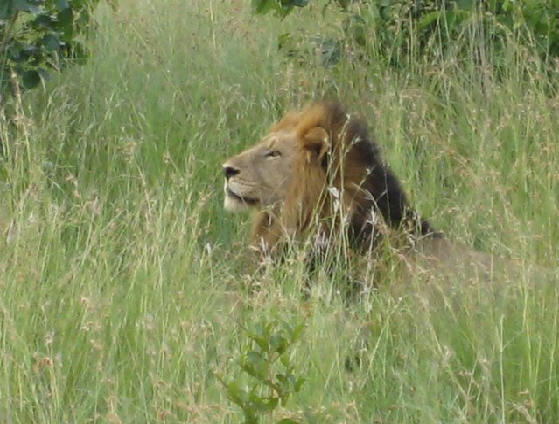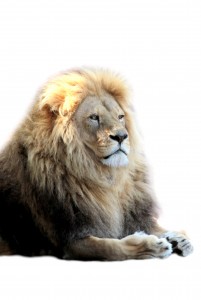 Decline in Prey Detrimental to Lions
Decline in Prey Detrimental to Lions
While lion populations are stable in a hand full of South African nations, sharp declines have occurred in West, Central and East Africa. The declines are driven by the usual suspects: habitat loss, indiscriminate killing of lions in response to livestock conflict, depletion of prey through unsustainable bushmeat trade and unregulated sport hunting. These threats limit lion populations by varying degrees per country but until recently the impact of bushmeat hunting had been ignored. Now, it is understood that loss of prey due to the over hunting of ungulates is problematic in every single protected area of savannah habitat.
The African lion is the largest land predator of the continent and needs a steady supply of prey. Lion populations are directly related to the number of wild herbivores weighing 200-550 kilograms. Unfortunately, these same larger ungulates are the targets of the unsustainable and increasingly commercialized bushmeat trade. This trade has led to the collapse in prey populations across large parts of savannah Africa.
The bushmeat trade is motivated by human encroachment into wildlife areas, poverty, and food insecurity. In addition, conservation efforts have been hindered by inadequate wildlife laws and enforcement. Population data from 1970-2005 on 78 species of herbivores revealed a decline by 52% in Eastern Africa and by 85% in West Africa.
This decline of ungulates is detrimental for lions and a major effort to survey lion populations across West and Central Africa proved this to be true. Between 2006 and 2012, 21 protected areas were surveyed, including all of the largest protected areas with the lion’s historical range in West Africa. Every site reported lions in 2005, however when the survey was complete, of the 21 protected areas surveyed, only 4 still contained lions.
Lions of West and Central Africa Expected to be Added to the IUCN Red List as Critically Endangered
The total West African lion population is estimated to range between 273-605 individuals, and likely less than 250 mature lions. 90% of the remaining lions survive in one population in a protected area that straddles the border region of Benin, Burkina Faso and Niger. A small population of less than 50 individuals survive in Senegal and Nigeria’s game reserves.
These startling results warrant listing the lion as Critically Endangered in West Africa on the IUCN Red List. The current IUCN Red List already supports a separate regional listing of the lion in West Africa and is expected to respond to this dire situation by assigning lions the highest threat category in this region when the updated Red List is published later this year.
This listing might draw some much-needed attention to the predicament of the lion in West Africa, but solid measures are urgent to safeguard the remaining lion populations.
The Lions of West and Central Africa are an Irreplaceable Subspecies
The lions of West and Central Africa are irreplaceable. Recent molecular study has separated modern lions into a northern group, comprising the last remaining Asiatic lions in India, the extinct Barbary lions of North Africa, and lions from West and Central Africa and a southern group, comprising lions in East and Southern Africa. Lion geneticists argue in support of a taxonomic revision of the lion and call for recognition of a southern and a northern subspecies, as opposed to the current division of an African and an Asian subspecies. Of the estimated 30,000 lions surviving today, 90% belong to the southern group.
Conservationists plead that the imperiled northern group, comprising the unique lions of West and Central Africa calls for emergency and coordinated intervention before it is too late.
Henschel P and Hunter L, 2014. The dire conservation status of lions in West and Central Africa, Current Conservation, Vol. 8 Issue 4, 12-13.
Henschel P et al. 2014. The Lion in West Africa is Critically Endangered. PLoS One, 9, e83500.


too sad for words, brings me to tears
How sad, I truly hope something can be done to help these magnificent cats before they become… just a memory ???